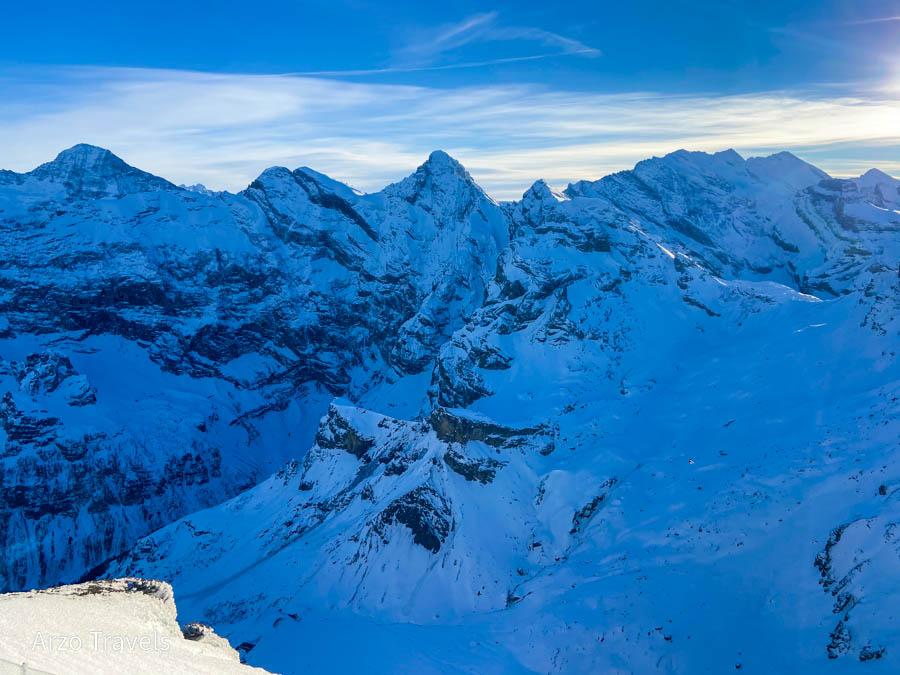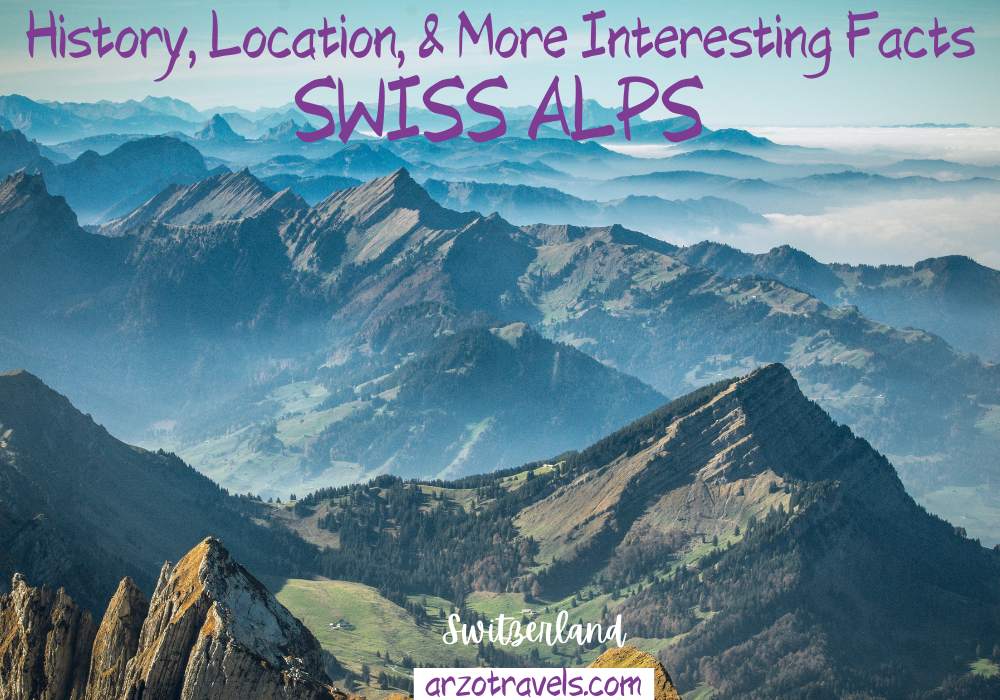
Carved by ancient glaciers and steeped in legend, the Swiss Alps are more than just a mountain range; they are the very soul of Switzerland. A breathtaking expanse of jagged peaks, emerald valleys, and crystalline lakes, this iconic landscape has captivated adventurers, artists, and travelers for centuries. It’s a place where the thunder of a waterfall harmonizes with the gentle clanging of cowbells, and where state-of-the-art cable cars ascend to realms once reserved for the most daring mountaineers.
This comprehensive guide delves into the facts, history, and practicalities of exploring this magnificent region, offering everything you need to plan an unforgettable journey to the rooftop of Europe.
A Tapestry of Time: The History of the Swiss Alps
Related Articles about The Majestic Swiss Alps: A Comprehensive Guide to Europe’s Rooftop Playground:
- A Tapestry of Wonders: Unveiling the Best Tourist Attractions in the USA
- The Untamed Heart of Africa: Unveiling the Facts About Kruger National Park
- Aotearoa Unveiled: Your Comprehensive Travel Guide to New Zealand
- The Shimmering Mirage: A Comprehensive Travel Guide to the United Arab Emirates
- Amman: A City of Contrasts, Where Ancient Echoes Meet Modern Vibrancy
The story of the Swiss Alps began over 100 million years ago, born from the colossal collision of the African and Eurasian tectonic plates. This immense geological pressure folded and thrust the earth upwards, creating the dramatic peaks we see today. For millennia, these mountains were a formidable barrier, isolating communities and shaping distinct cultures in their secluded valleys.
Early human presence is evidenced by discoveries like Ötzi the Iceman, found preserved in a glacier on the nearby Austro-Italian border, giving us a glimpse into life in the Alps over 5,000 years ago. The Romans built strategic passes like the Great St. Bernard to traverse this obstacle, but for centuries, the high Alps remained a wild, untamed, and often feared wilderness, believed to be inhabited by dragons and spirits.
This perception began to change dramatically in the 19th century with the dawn of the "Golden Age of Alpinism." British aristocrats and adventurers, fueled by a romantic fascination with the sublime, flocked to Switzerland to conquer its virgin peaks. The ascent of the Matterhorn in 1865 by Edward Whymper’s party marked a pivotal, albeit tragic, moment that cemented the Alps’ place in the global imagination.
This burgeoning interest in mountaineering was soon followed by the development of tourism. Visionary engineers achieved incredible feats, constructing cogwheel railways and funiculars that made the high-altitude wonders accessible to the general public. The Jungfrau Railway, tunneling through the Eiger and Mönch mountains to reach the "Top of Europe," and the Gornergrat Railway, offering unparalleled views of the Matterhorn, transformed remote viewpoints into world-renowned destinations. The Alps had evolved from a barrier into a playground, the heart of Switzerland’s national identity and its most precious natural treasure.
The Crown Jewels: Main Attractions
The Swiss Alps are studded with iconic sights, each offering a unique experience. While the list is nearly endless, a few stand out as essential destinations.
The Matterhorn (Zermatt): Arguably the most famous mountain in the world, the Matterhorn’s pyramidal peak is an unforgettable sight. Located above the charming, car-free village of Zermatt, it is a mecca for mountaineers, hikers, and photographers. For non-climbers, the best way to experience it is via the Gornergrat Railway. This historic cogwheel train ascends to a 3,089-meter (10,135 ft) summit, offering a 360-degree panorama of the Matterhorn, the Gorner Glacier, and 28 other peaks over 4,000 meters.
The Jungfrau Region (Interlaken, Grindelwald, Wengen): Nestled between the shimmering lakes of Thun and Brienz, Interlaken serves as the gateway to this spectacular region. Dominated by the mighty trio of the Eiger, Mönch, and Jungfrau mountains, this area is a paradise for outdoor enthusiasts. The absolute highlight is the journey to Jungfraujoch – Top of Europe. At 3,454 meters (11,333 ft), it is the highest railway station in Europe. Visitors can explore the Ice Palace carved into the glacier, stand on the Sphinx Observatory for breathtaking views of the Aletsch Glacier, and experience a world of eternal snow and ice.
Mount Pilatus (Lucerne): The mountain massif looming over Lucerne is steeped in folklore, once believed to be the home of dragons. Today, it offers one of Switzerland’s most thrilling round-trip excursions, the "Golden Round Trip." This involves a boat cruise on Lake Lucerne, an ascent on the world’s steepest cogwheel railway (with gradients up to 48%), and a descent via a series of panoramic gondolas and aerial cableways. The summit provides stunning views of the lake and the central Swiss Alps.
St. Moritz: The birthplace of winter tourism, St. Moritz is synonymous with glamour, luxury, and world-class sport. This chic resort town has hosted the Winter Olympics twice and continues to attract a sophisticated clientele. Beyond its designer boutiques and grand hotels, St. Moritz offers pristine skiing, the legendary Cresta Run toboggan track, and unique events like polo and horse racing on its frozen lake.
Aletsch Glacier: A UNESCO World Heritage site, the Great Aletsch Glacier is the largest in the Alps, a 23-kilometer-long river of ice that winds its way through the mountains. Viewpoints like Eggishorn and Bettmerhorn are accessible by cable car and provide awe-inspiring perspectives of this natural wonder. Hiking along the glacier’s edge is a powerful reminder of nature’s scale and the urgent need for its preservation.
Alpine Gastronomy: A Taste of the Mountains
Swiss Alpine cuisine is hearty, rich, and designed to fuel an active day in the mountains. It’s a celebration of local ingredients, particularly cheese and potatoes.
- Cheese Fondue: The quintessential Swiss dish. Melted Gruyère and Vacherin cheese, blended with white wine and kirsch (cherry brandy), are served in a communal pot (a caquelon) for dipping crusty bread.
- Raclette: Another cheese-centric delight. A large wheel of Raclette cheese is heated, and the melted layer is scraped onto a plate of boiled potatoes, gherkins, and pickled onions.
- Rösti: A simple yet delicious dish of grated potatoes pan-fried until golden and crispy. It’s often served as a side dish but can be a main course topped with a fried egg, bacon, or cheese.
- Älplermagronen (Herdsman’s Macaroni): The ultimate comfort food. This is a rustic gratin made with pasta, potatoes, cream, cheese, and onions, traditionally served with a side of applesauce.
- Bündner Nusstorte: A sweet, caramelised nut-filled pastry originating from the Engadine region. It’s the perfect treat to enjoy with coffee after a long hike.
Navigating the Peaks: Transportation Options
Switzerland’s public transportation system is a marvel of engineering and efficiency, making travel through the Alps seamless and scenic.
- The Swiss Travel System: The Swiss Travel Pass is an all-in-one ticket offering unlimited travel on trains, buses, and boats across the country. It also includes free entry to over 500 museums and provides a 50% discount on most mountain railways and cable cars.
- Scenic Trains: For many, the journey is the destination. The Glacier Express connects Zermatt and St. Moritz, famously known as the "world’s slowest express train," crossing 291 bridges and passing through 91 tunnels. The Bernina Express travels from Chur to Tirano, Italy, on a UNESCO World Heritage route, showcasing a stunning transition from alpine glaciers to Italian palms.
- Mountain Transport: Cogwheel railways, funiculars, and cable cars are the workhorses of the Alps, whisking visitors to summits and viewpoints that would otherwise require strenuous climbs.
- Driving: Renting a car offers flexibility, but be prepared for narrow, winding mountain passes, which can be challenging and are often closed in winter. Parking in mountain villages is limited and expensive. For most travelers, the train system is the superior option.
When to Go: The Best Time to Visit
The Swiss Alps are a year-round destination, with each season offering a distinct charm.
- Summer (June to August): This is peak season for hiking, mountain biking, and water sports on the lakes. The weather is warm, meadows are lush with wildflowers, and all trails and mountain passes are open. Expect larger crowds and higher prices.
- Winter (December to March): A winter wonderland perfect for skiing, snowboarding, snowshoeing, and cozying up by a fire. Christmas markets and the magical snowy landscape create an enchanting atmosphere.
- Shoulder Seasons (April-May & September-October): These months offer the best of both worlds. Spring (April-May) sees the snow melt, waterfalls gush, and valleys burst into color. Autumn (September-October) brings crisp air, golden larch forests, and fewer tourists. Note that some high-altitude lifts and trails may be closed during these periods.
Where to Stay: Accommodation Options
From opulent palaces to rustic huts, the Alps cater to every budget and style.
- Luxury Grand Hotels: Historic establishments in places like St. Moritz, Gstaad, and Interlaken offer five-star service, spas, and gourmet dining (e.g., Badrutt’s Palace, Victoria Jungfrau Grand Hotel & Spa).
- Charming Chalets & Boutique Hotels: For an authentic alpine experience, stay in a family-run hotel or a traditional wooden chalet in villages like Wengen, Mürren, or Zermatt.
- Mountain Huts (Hütten): For serious hikers, staying in a Swiss Alpine Club (SAC) hut is an unforgettable experience. Accommodation is often in dormitories, but the camaraderie and sunrise views from high in the mountains are unparalleled.
- Budget-Friendly Options: Hostels are available in most major towns, and farm stays (Agritourism) offer a unique and affordable way to experience rural Swiss life.
Essential Travel Tips for an Alpine Adventure
- Pack in Layers: Mountain weather is notoriously fickle. A sunny day can turn cold and rainy in minutes. Pack a waterproof jacket, fleece, and warm hat, even in summer.
- Sun Protection is Crucial: The sun’s UV rays are much stronger at high altitudes. Always wear sunscreen, sunglasses, and a hat.
- Stay Hydrated: The dry, thin air at altitude can lead to dehydration. Drink plenty of water throughout the day.
- Book in Advance: During peak season, popular scenic trains (like the Glacier Express) and accommodations can be fully booked months ahead.
- Embrace Public Transport: The Swiss Travel System is not only efficient but also offers some of the most beautiful journeys you’ll ever take.
- Respect Nature: Stick to marked trails to protect the fragile alpine ecosystem, carry out all your trash, and never disturb wildlife.
- Learn a Few Words: While English is widely spoken, a friendly "Grüezi" (Hello in Swiss-German), "Merci" (Thank you), and "Bitte" (Please/You’re welcome) will be appreciated.
Conclusion: An Invitation to the Sublime
The Swiss Alps are a destination that transcends a simple vacation. They are an invitation to reconnect with the raw power and serene beauty of nature. Whether you are seeking the adrenaline of a mountain ascent, the tranquility of a valley hike, the comfort of a fondue pot, or the simple joy of a breathtaking view, the Alps deliver. They are a timeless, majestic, and profoundly moving landscape that leaves an indelible mark on all who visit, calling them back time and time again to explore another peak, another valley, another story etched in stone and ice.








